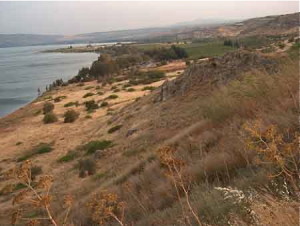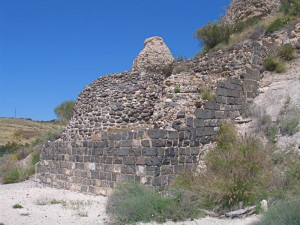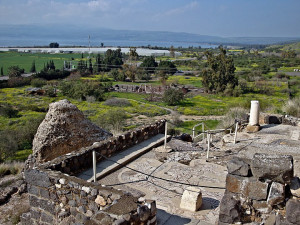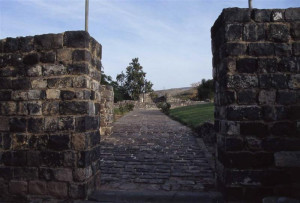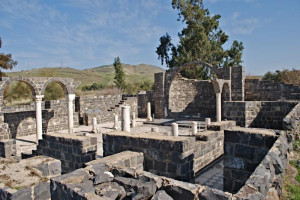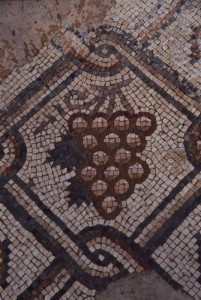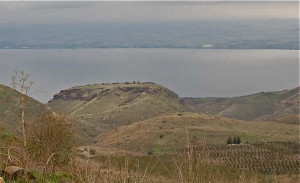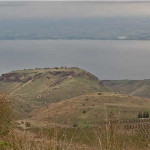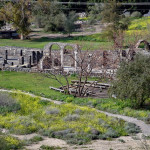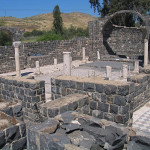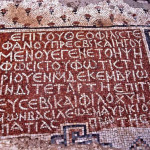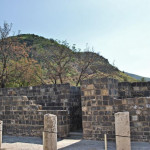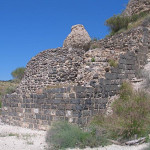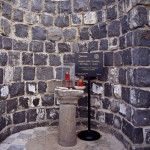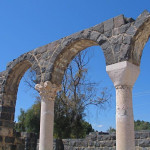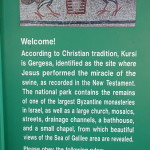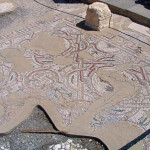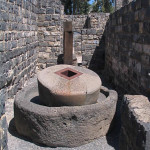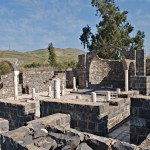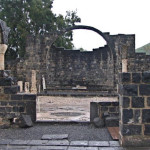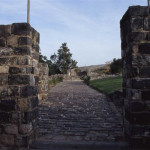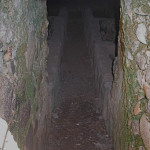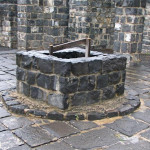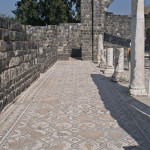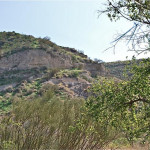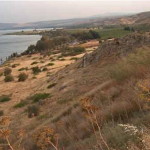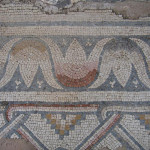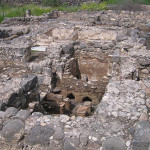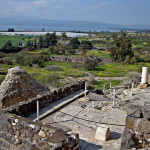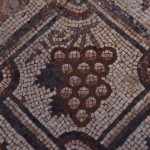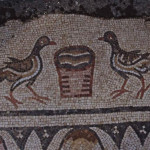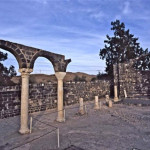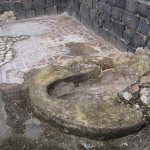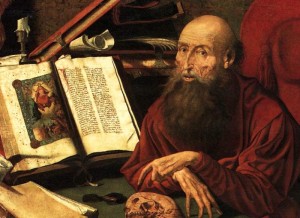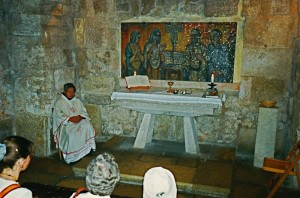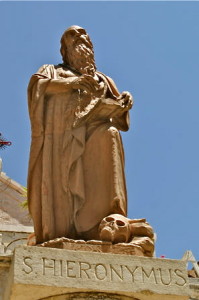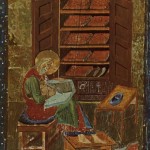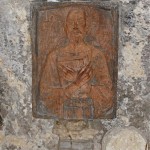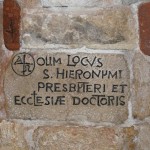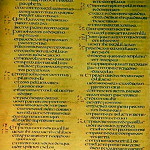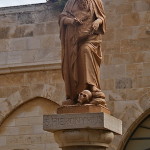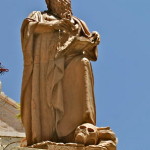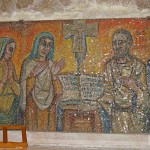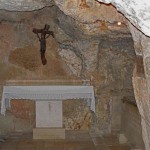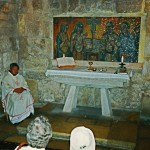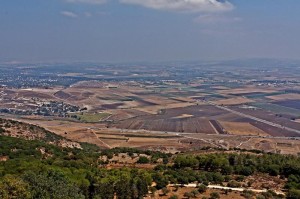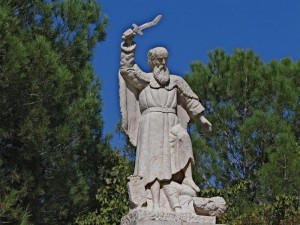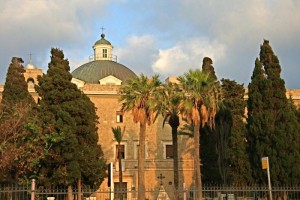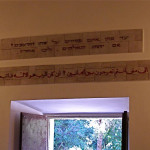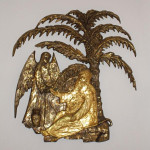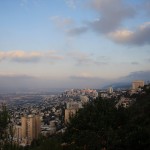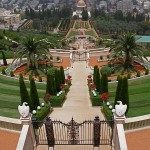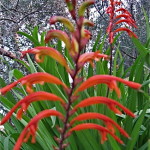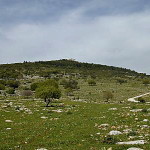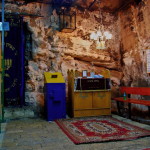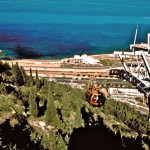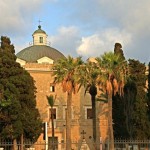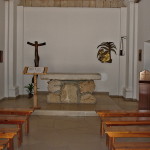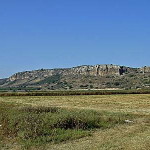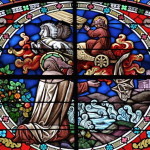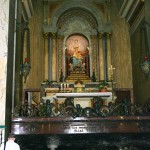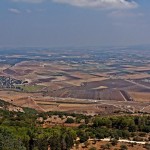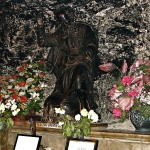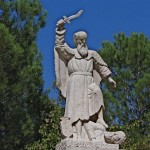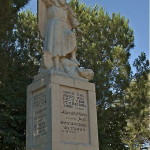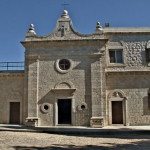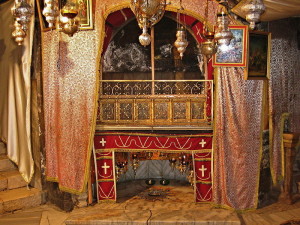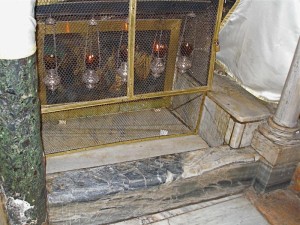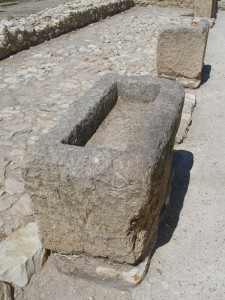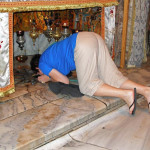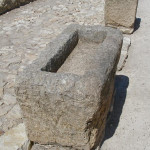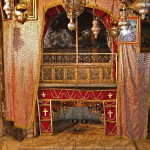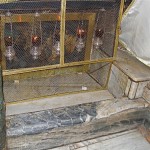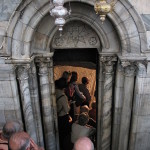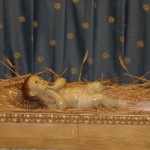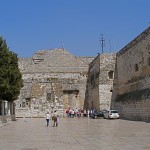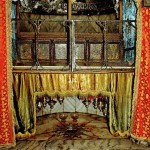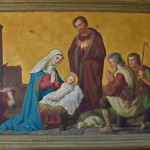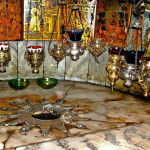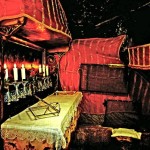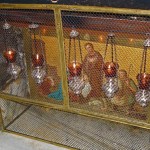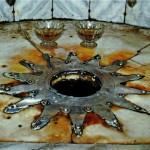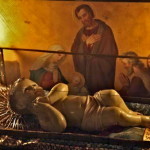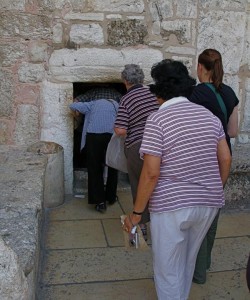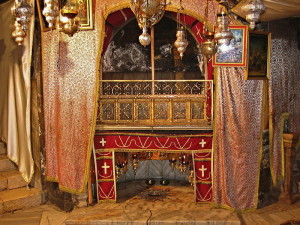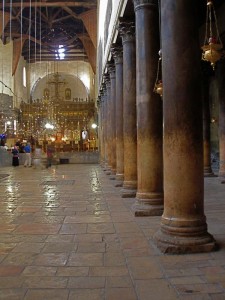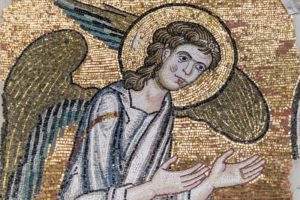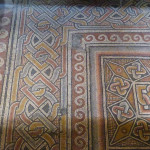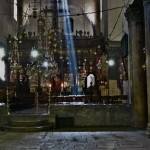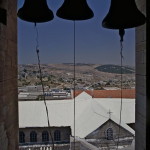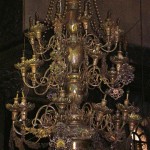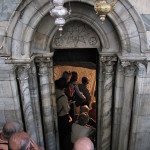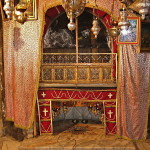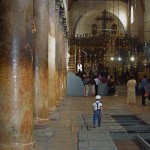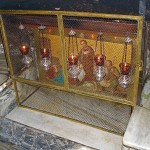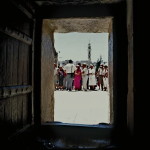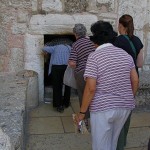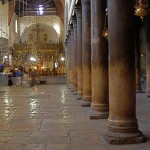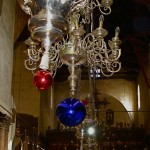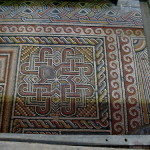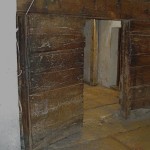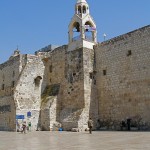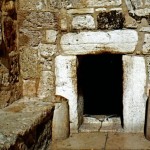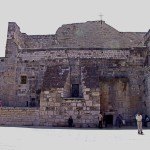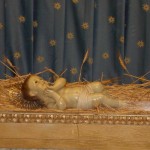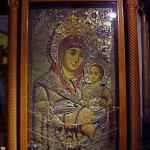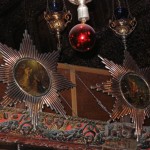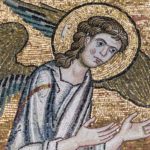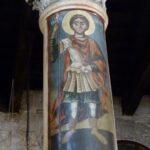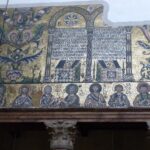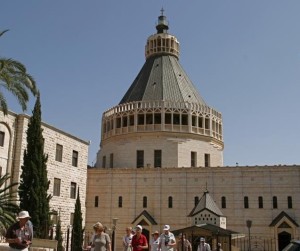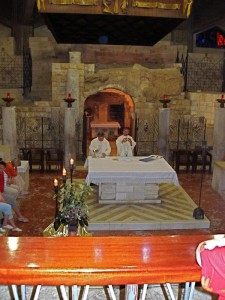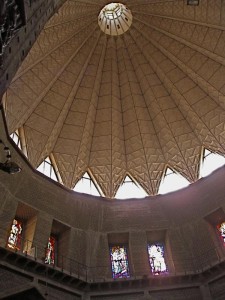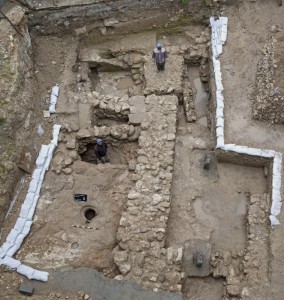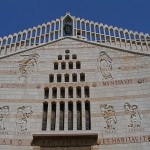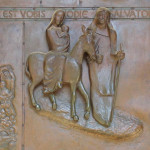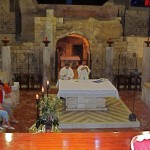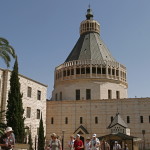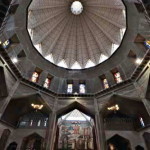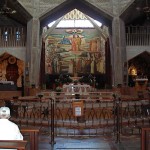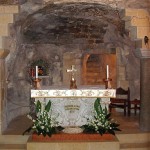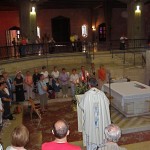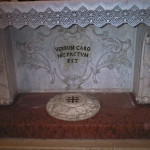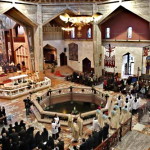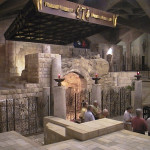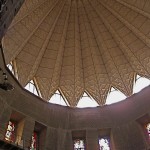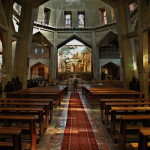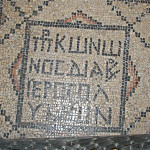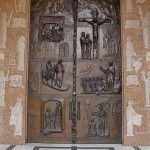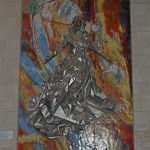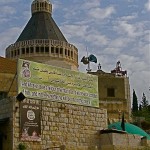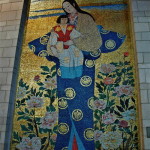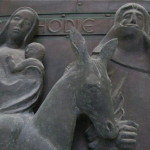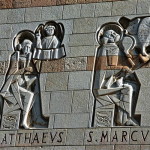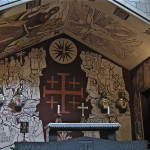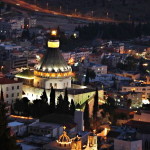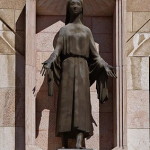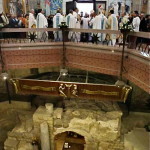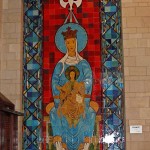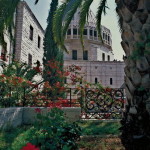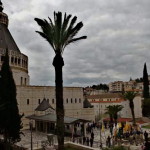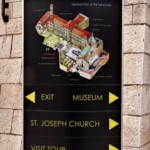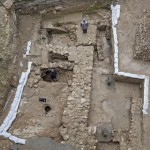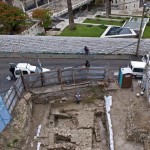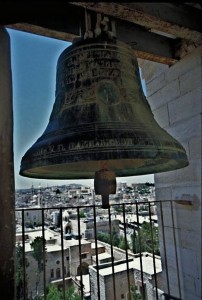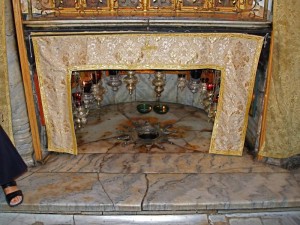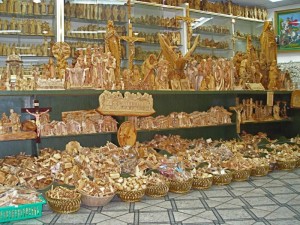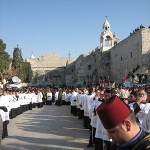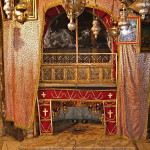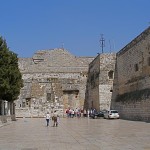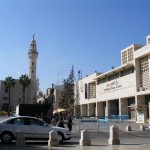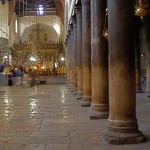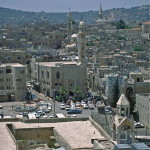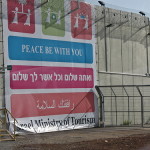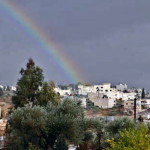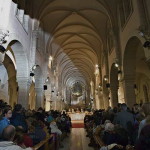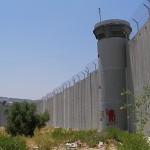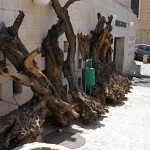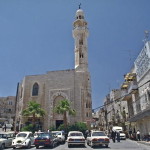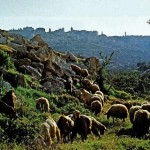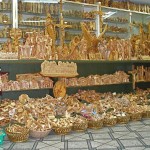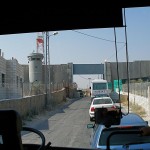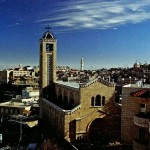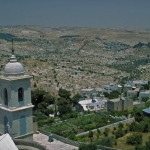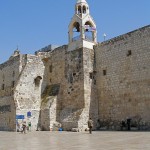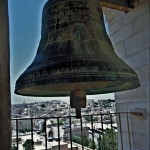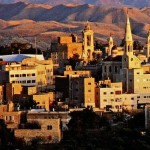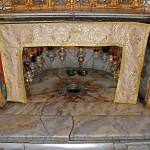Israel
A headlong stampede by a herd of demon-possessed pigs into the Sea of Galilee is remembered at Kursi, a picturesque site beneath the Golan Heights on the eastern side of the lake.
Three Gospels tell the story: Jesus steps out of a boat after crossing the lake and is confronted by a man possessed by demons. When Jesus orders the demons to leave the man, they beg to be allowed to enter a herd of swine grazing nearby. Jesus agrees, and the swine — numbering about 2000 — rush down a bank into the water and are drowned. (Luke 8:26-39; Mark 5:1-20; Matthew 8:28-34)
The dismayed swineherds run off to spread the news, and the local people ask Jesus to leave their neighbourhood. The healed man begs to go with Jesus — but Jesus tells him to go home and tell his friends what has happened.
“And he went away and began to proclaim in the Decapolis how much Jesus had done for him; and everyone was amazed” (Mark 5:20). So this gentile man becomes the first person commissioned by Jesus to spread the Good News to non-Jews.
Kursi was an important place of Christian pilgrimage from the 5th century, when the lakeside towns of Capernaum, Bethsaida and Chorazin — all three condemned by Jesus for their lack of faith — had fallen into decline.
Kursi is the site of the largest known Byzantine monastery complex in Israel, whose impressive remains have been partly reconstructed.
On the side of the hill behind the monastery are the remains of an earlier chapel, built into a cave. It overlooks a huge boulder enclosed in a retaining wall of stones — apparently identifying the site as the place of the miracle.
Location revealed by bulldozer
Kursi is 5 kilometres north of Ein Gev, near the junction where route 789 leaves the lakeside road (route 92) to mount the Golan Heights. Its name, meaning “chair” in Semitic languages, probably refers to the shape of the broad valley behind it.
Different Gospel manuscripts offer conflicting names for the area in which the miracle took place — the country of the Gadarenes, Gerasenes, or Gergesenes.
What is certain is that the location was in gentile territory. Because Jewish dietary laws forbid the eating of pork, no Jew would have been raising pigs.
The identification of Kursi with the place of the miracle was known to early Christian writers and pilgrims — among them St Sabas, founder of Mar Saba monastery, who prayed at the site in 491.
Kursi lay unknown for many centuries until pieces of Byzantine pottery were noticed in the trail of a bulldozer constructing a new road to the Golan Heights in 1970.
As well as the monastery complex, excavators found an ancient fishing harbour — one of at least 16 around the Sea of Galilee — with a breakwater and a pool where live fish were kept to await sale.
Guesthouse for pilgrims uncovered
Kursi’s extensive monastery, built in the 5th century, covered 1.8 hectares. Around it stood a defensive stone wall with a watchtower. At its heart was a large church, with a spacious courtyard in front of it.
The church was divided by two rows of stone columns into a nave and two side aisles. Under a chapel in the right-hand aisle, skeletons of 30 monks were found buried in a crypt.
A large oil press was found in a side room in the left-hand aisle, suggesting that production of olive oil would have been a major source of income for the monastery.
As well as living quarters for the monks, a guesthouse and bath complex for pilgrims have been uncovered. A paved road led from the monastery to the harbour where pilgrims arrived.
The floor of the church was paved with mosaics depicting animal and plant life: Roosters, geese, doves, cormorants, fish, grapes, figs, pomegranates, watermelon and bananas.
When the monastery was abandoned in the early 8th century — after being damaged by fire and earthquake, and invaded by Persians and Muslims — it was used by local Arabs to live in and house their animals.
At that time all of the animal mosaics were obliterated to comply with the Islamic prohibition against human or animal representations.
Bench overlooked site of miracle
The chapel on the hill behind the monastery was probably built before the monastery, since its mosaic floor includes crosses. From the year 427, crosses were prohibited on church floors, by order of Christian emperor Theodosius II.
A stone bench in the chapel provided a view of the boulder that apparently marks the site of the miracle — and, beyond it, the Sea of Galilee.
Five kilometres south, on the hill directly behind the kibbutz at Ein Gev, stood the ancient city of Hippos (in Greek) or Susita (in Aramaic), both names meaning “horse”.
It would have been to this city that the swineherds ran to tell of the fate of their pigs. And it would have been the residents of this city who begged Jesus to leave their neighbourhood (Matthew 8:34).
Hippos may also have been the hilltop city Jesus referred to when he said, “A city built on a hill cannot be hid” (Matthew 5:14).
The remains of a Byzantine cathedral and four other churches have been found at Hippos, and a bishop from Hippos is recorded as attending the Church councils of Nicea and Constantinople in the 4th century.
In Scripture:
Jesus heals the man possessed by demons: Luke 8:26-39; Mark 5:1-20; Matthew 8:28-34
Administered by: Israel Nature and Parks Authority
Tel.: 972-4-673-1983
Open: Apr–Sep 8am–5pm; Oct–Mar 8am–4pm; Fridays and eves of holidays, 8am-4pm. Last entry to site one hour before closing time.
- Hilltop site of Hippos (David Q. Hall)
- Ruins of monastery at Kursi (Steve Peterson)
- Inside Kursi church (Bukvoed)
- Greek inscription at Kursi monastery (© Israel Ministry of Tourism)
- Monastery wall at Kursi (Bill Rice)
- Boulder at Kursi miracle site (Bukvoed)
- Chapel in monastery church at Kursi (© Israel Ministry of Tourism)
- Restored arches in Kursi church (Bukvoed)
- Welcome notice at Kursi (Steve Peterson)
- Obliterated mosaics in Kursi church (Bukvoed)
- Olive press in Kursi church (Bukvoed)
- Inside monastery church at Kursi (Bill Rice)
- Inside monastery church at Kursi (Biblicalisraeltours.com)
- Entrance to Kursi (© Israel Ministry of Tourism)
- Crypt in Kursi monastery church (Bukvoed)
- Altar in church at Kursi (Biblicalisraeltours.com)
- Aisle in monastery church at Kursi (© Israel Ministry of Tourism)
- Hill behind Kursi monastery (Bill Rice)
- Steep slope near Kursi (David Q. Hall)
- Mosaic in Kursi church (Yair Talmor)
- Baths in Kursi monastery complex (Yair Talmor)
- Chapel overlooking boulder at site of miracle, with monastery in middle distance (Steve Peterson)
- Mosaic of grapes at Kursi (© Israel Ministry of Tourism)
- Mosaic of birds at Kursi (© Israel Ministry of Tourism)
- Restored arches in church at Kursi (© Israel Ministry of Tourism)
- Baptistery in Kursi church (Yair Talmor)
References
Bourbon, Fabio, and Lavagno, Enrico: The Holy Land Archaeological Guide to Israel, Sinai and Jordan (White Star, 2009)
Dyer, Charles H., and Hatteberg, Gregory A.: The New Christian Traveler’s Guide to the Holy Land (Moody, 2006)
Gonen, Rivka: Biblical Holy Places: An illustrated guide (Collier Macmillan, 1987)
Murphy-O’Connor, Jerome: The Holy Land: An Oxford Archaeological Guide from Earliest Times to 1700 (Oxford University Press, 2005)
Pixner, Bargil: With Jesus Through Galilee According to the Fifth Gospel (Corazin Publishing, 1992)
Prag, Kay: Israel & the Palestinian Territories: Blue Guide (A. & C. Black, 2002)
Tzaferis, Vassilios: “A Pilgrimage to the Site of the Swine Miracle”, Biblical Archaeology Review, March/April 1989
Nun, Mendel: “Ports of Galilee”, Biblical Archaeology Review, July/August 1999
Walker, Peter: In the Steps of Jesus (Zondervan, 2006)
Wareham, Norman, and Gill, Jill: Every Pilgrim’s Guide to the Holy Land (Canterbury Press, 1996)

